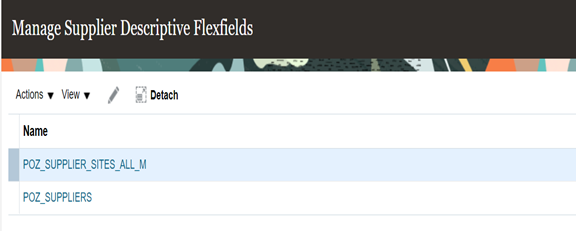Table of Content:-
What is ERP implementation?
Oracle Enterprise Resource Planning Cloud Implementation
Step 1: Understanding the Implementation Process
Step 2: Implement The Project Design
Step 3: Analyzing The Accuracy of Implementation Tasks
Step 4: Get Ready for The Implementation
Step 5: How To Manage A Successful Deployment
What is ERP implementation?
Oracle ERP implementation is a critical project for any business looking to upgrade their enterprise system. It doesn’t matter if they are replacing their on-premise solution or adding new features to their current cloud environment. Irrespective of the kind of ERP system chosen by the business, successful implementation is essential. The result of this implementation leads to a holistic user experience along with better security.
More often than not, the success is measured by identifying and managing users expectations, project requirements, costing and project timeline. It requires careful planning and project execution with by an efficient team that analyzes Oracle Enterprise Resource Planning Cloud and steer the business forward through a thoughtful implementation.
In this blog we have outlined the ERP system implementation steps along with the detailed tasks to follow.
Oracle Enterprise Resource Planning Cloud Implementation
With the technological evolution, businesses are eager to switch the on-premise applications to the Cloud. This can be made possible via successful ERP implementation. Now, the ERP implementation can help in a number of ways including but not limited to – improving cost efficiency and stay updated with the evolving technological changes. It is crucial to understand the primary reason why ERP implementation is highly successful and what can be done to ensure a seamless experience.
Let us go through the Oracle ERP cloud implementation steps to follow.
Step 1: Understanding the Implementation Process
As a business, it is crucial to understand the different areas of implementation like the project type, members working on each segment and how they will interact with each other during the implementation process. ERP implementation is similar to any other project with a few changes. These differences can be determined only when the project is planned accordingly. One of the biggest advantage of implementation is evident in the beginning of the process which is different compared to an on-premise implementation.
An ERP implementation project is further divided into five groups as under:
- Project Definition
Mapping out a clear project definition is the first step towards achieving ERP implementation success. It might be overwhelming to begin with but it is highly important to achieve this before moving on to the next step. If not done correctly, it will hamper the project at a later stage. By proper planning in the first stage, you would be able to save a lot of time and efforts of your implementation team.
For this, you will need a clear project definition with a clear and concise goal. The project definition will work as a guide and ensure the implementation is achieved in time within the stipulated budget.
- Build Your Team
It is easier to create a team for your cloud implementation project. The best part about building this team is that you don’t need a team of app developers or consultants. On the other hand, it would be a plus to have a few data analysts in your team. Additionally, try to create a blueprint with clear responsibilities for every team member.
- Create Your Design
Next, a successful implementation project needs impeccable project design. For that, it is important to prepare a primary design document. This design document works as a bible for the application development team for development and integration. If these tasks are handled manually, it would be overwhelming to manage. However, in the latest system processes are simplified to make it easier for teams to implement.
- Kickstart Your Project
Before starting the project, it is necessary to define the path or the structure in which each step will be followed. This also includes the features that need to be included in Phase 1 and the remaining features can be shifted to the next phase. Moreover, understand and study the key metrics after starting the project. This should be a preferred method, whether it is for cloud or on-premise project implementations.
- Communication
How teams communicate internally can sometimes make or break the project. The importance of proper communication must not be overlooked at any stage. If the team members are not on the same page or working on the same goal, it would be very difficult to achieve the defined objectives within budget on time.
Step 2: Implement The Project Design
After the initial stage which ensures proper planning, we come to next stage which includes project design implementation. Here, this step ensures that the project is running on time and doesn’t exceed the stipulated budget.
Once the planning stage is done, it is easier move on to the next stage. It is a critical stage where most of the project is defined including costing and project timeline. Having said that, implementing a cloud project is much easier than a conventional on-premise solution.
Let us discover the points that must be considered at this stage:
How to configure?
In the initial planning stage, it is a good idea to define clear roles for each member of the team. During a standard implementation, operational tasks can be defined easily and linked with the other areas of the business.
Is it easy to integrate?
As a business, you must expect some kind of integration. For In this step, it is possible to leverage available integration frameworks that you have previously developed for other projects. Few solutions incorporate major processes in large enterprises. Most businesses use OIC to enhance and improve on previous integrations.
How to manage Data?
Project transformation includes transferring a lot of business-critical data in the cloud. Here, it is important to use the ETL method (extract, transformation, and load) to keep a thorough check on the quality of data.
Step 3: Analyzing The Accuracy of Implementation Tasks
Once the implementation tasks mentioned in step 2 are done, it is crucial to verify the tasks against business requirements. It is important to check the below details:
- Check Migrated Data
When we think about data migration, it is vital to the implementation and arguably the most important requirement that needs to be fulfilled during implementation. When you have clean and crisp data, you can ensure that the project implementation will not suffer due to data inaccuracy.
- Check Redundant Data
Sometimes, old systems can consist of redundant data. It is important that the redundant data is rechecked before being discarded as it might have some valuable data which can be useful in the current system. So, it is best to archive this data safely and transfer the valuable data which is useful in the existing system.
- Ensuring Security
Thorough testing of the four key operations is essential including copy, read, update and delete access for unverified users or users that have left the organization. Oracle has outlined security principles which can be leveraged by all partners and customers.
Step 4: Get Ready for The Implementation
As soon as you get business approval, we can move on to the implementation part.
The countdown to a production cloud system starts. The below mentioned tasks must run in sync:
- Set Initial Values
The first task revolves around compiling a list of items that are on high priority to set initial values in place. This can be sorting out the first order value that need to be assigned in the cloud.
- Prepare The User
The second task in this list revolves around issuing the account specific details to the users in the group. Once the implementation goes live, they might need assistance with their account details or edit/upgrade some features.
- Business Readiness
The last but the most valuable task in the list is to provide basic training and focusing on organizational management. When the implementation goes well in the initial phase, it would be easier for the users to work on the latest implementation.
Step 5: How To Manage A Successful Deployment
Deployment is a cakewalk for projects where all the above steps are followed successfully. It is evident that some issues might surface during the deployment phase, however if the team is ready with the above steps, they can easily manage the deployment with ease.
The team working on the project along with the related IT infrastructure must rigorously monitor and analyse the system performance. Apart from that, time to time monitoring of users’ tasks is expected. As the complexity is limited for cloud projects, this can be a smooth experience provided the steps mentioned in this guide are followed rigorously.
Conclusion
It is evident that by following the above steps successfully, you can undertake the Cloud ERP implementation with ease. We hope that these steps will be helpful for your first Oracle Cloud project. If you are looking for assistance with your Cloud ERP implementation project, then you can get in touch with Conneqtion Group, India’s 1st Oracle PaaS Partners.




Modules of Oracle ERP Cloud For Effective Implementation
[…] is one of the biggest players in Cloud ERP solutions today. Oracle ERP provides an extensive ensemble of applications that enable businesses to make informed business […]